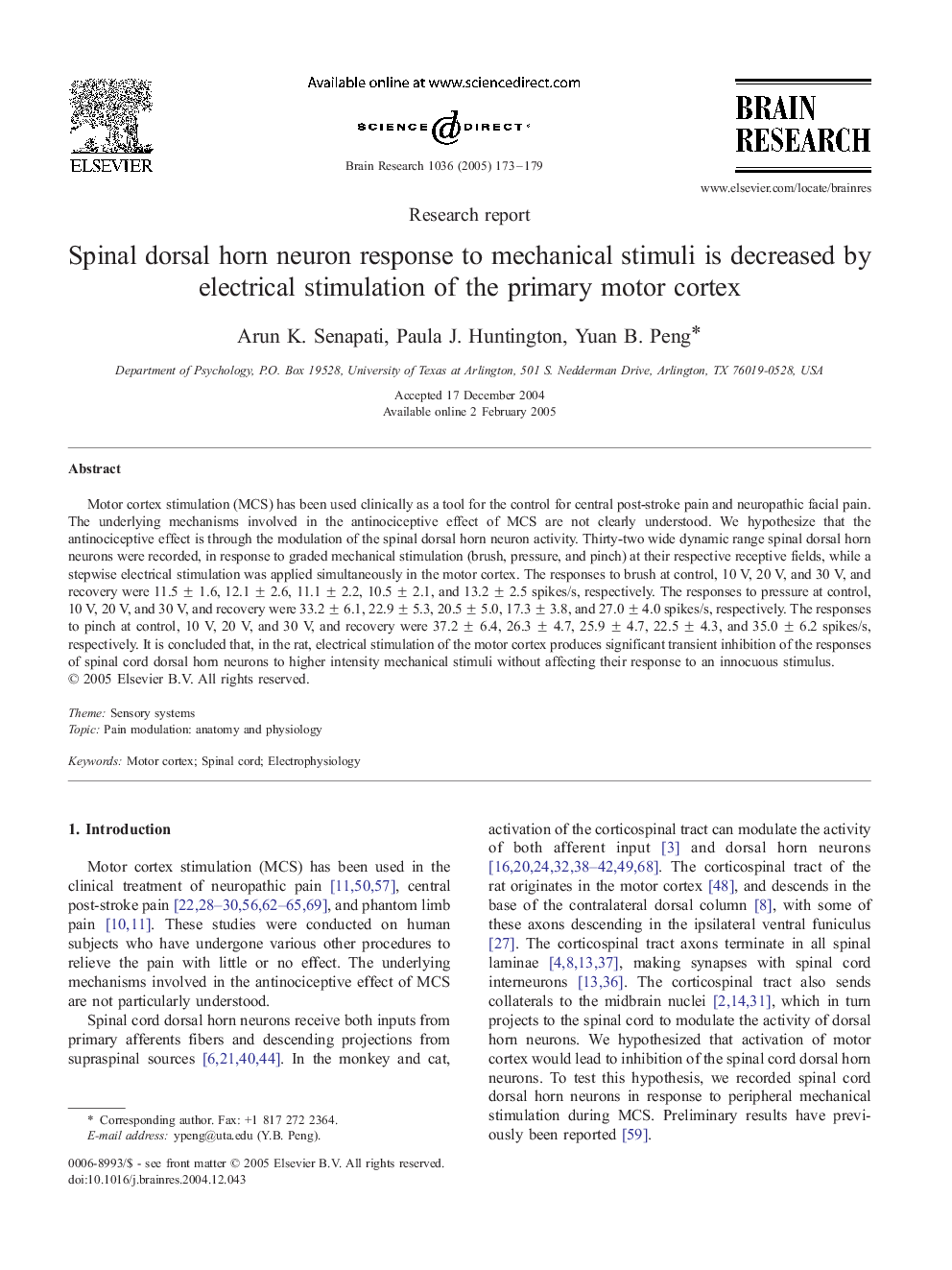| Article ID | Journal | Published Year | Pages | File Type |
|---|---|---|---|---|
| 9416789 | Brain Research | 2005 | 7 Pages |
Abstract
Motor cortex stimulation (MCS) has been used clinically as a tool for the control for central post-stroke pain and neuropathic facial pain. The underlying mechanisms involved in the antinociceptive effect of MCS are not clearly understood. We hypothesize that the antinociceptive effect is through the modulation of the spinal dorsal horn neuron activity. Thirty-two wide dynamic range spinal dorsal horn neurons were recorded, in response to graded mechanical stimulation (brush, pressure, and pinch) at their respective receptive fields, while a stepwise electrical stimulation was applied simultaneously in the motor cortex. The responses to brush at control, 10 V, 20 V, and 30 V, and recovery were 11.5 ± 1.6, 12.1 ± 2.6, 11.1 ± 2.2, 10.5 ± 2.1, and 13.2 ± 2.5 spikes/s, respectively. The responses to pressure at control, 10 V, 20 V, and 30 V, and recovery were 33.2 ± 6.1, 22.9 ± 5.3, 20.5 ± 5.0, 17.3 ± 3.8, and 27.0 ± 4.0 spikes/s, respectively. The responses to pinch at control, 10 V, 20 V, and 30 V, and recovery were 37.2 ± 6.4, 26.3 ± 4.7, 25.9 ± 4.7, 22.5 ± 4.3, and 35.0 ± 6.2 spikes/s, respectively. It is concluded that, in the rat, electrical stimulation of the motor cortex produces significant transient inhibition of the responses of spinal cord dorsal horn neurons to higher intensity mechanical stimuli without affecting their response to an innocuous stimulus.
Keywords
Related Topics
Life Sciences
Neuroscience
Neuroscience (General)
Authors
Arun K. Senapati, Paula J. Huntington, Yuan B. Peng,
